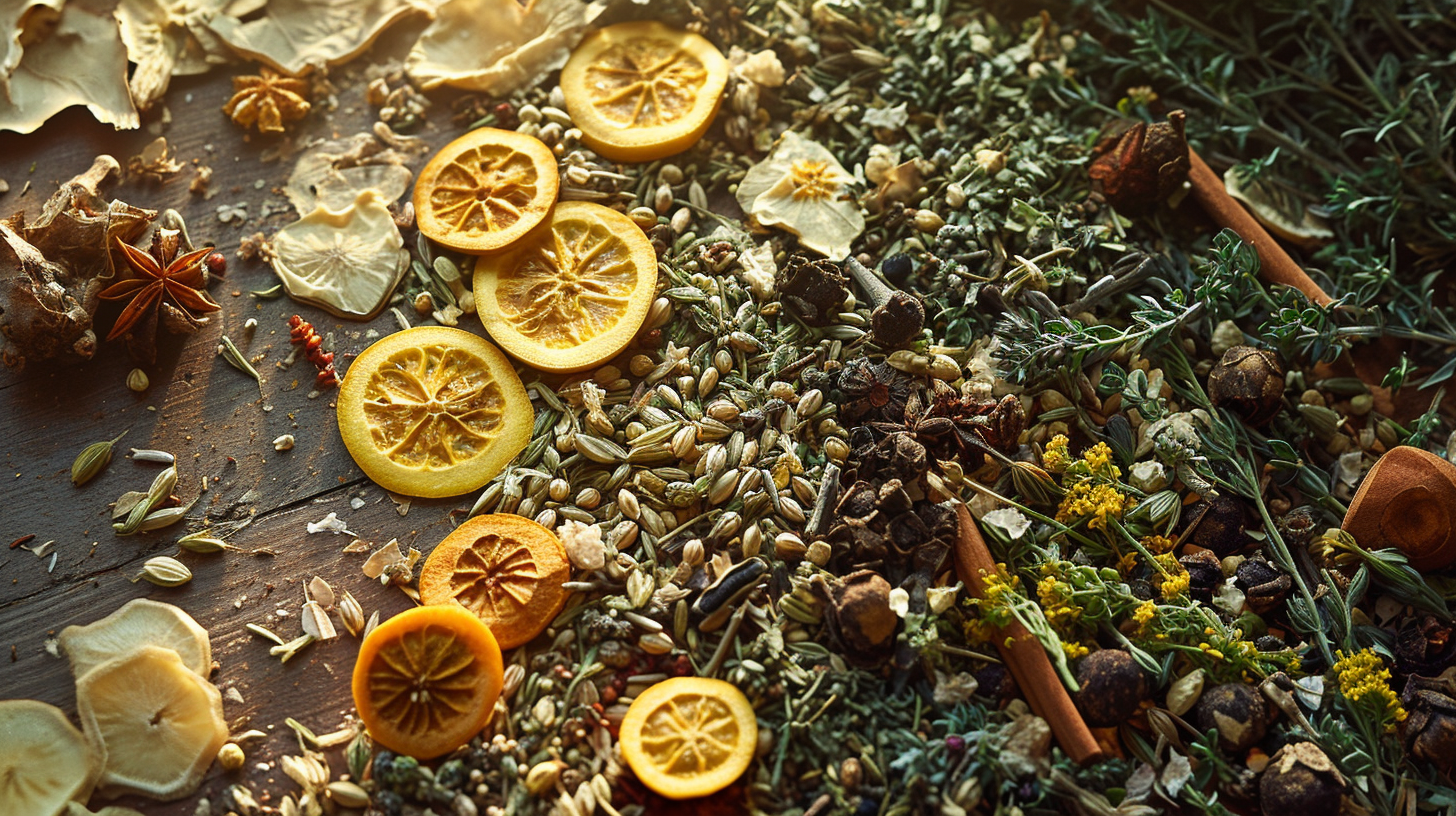What Does Gin Taste Like? Delving Into the Flavors and Profiles of This Classic Spirit.
A Flavorful Introduction: Gin's Distinct Profile
Gin’s intriguing story dates back to the 1600’s and its predecessor, Genever, the Dutch herbal remedy. Genever became popular throughout Europe and was imitated by the British in the 1700s with a rotgut recreational spirit dubbed ‘gin.’
The quality of the spirit eventually improved, and with expanding British colonization, gin consumption also increased across the globe. Today, it is one of the largest spirit categories and a favorite among craft distillers with its complex interplay of botanicals, herbs, and spices.
The Essence of Gin: Juniper Berries
Starting with a neutral spirit base, gin’s flavor is derived from the botanicals used. By law, gin must contain juniper, which has traditionally been the dominant flavor. Juniper berries impart the distinctive piney, evergreen-like flavor we associate with gin.
Botanical Blends: More than Just Juniper
In addition to juniper, gin contains a variety of other herbs and spices that contribute to the complexity, depth, and unique flavor profile of each gin. Botanicals like orris root and angelica root introduce earthy or woody undertones to the gin and help create a harmonious balance between the other flavors.
Citrus notes from the addition of lemon, orange, or grapefruit peels are also common in gin, imparting a brightness and zestiness that balances the piney juniper with refreshing acidity.
Some gins also incorporate botanicals like lavender, chamomile, or rose petals, adding subtle floral notes.
Ingredients such as black pepper, ginger, or chili add spicy or peppery notes. This can be experienced as a warming sensation and also contributes to the overall complexity of the gin.
A hint of bitterness, often from botanicals like quinine or bitter orange peel, can add a sophisticated edge to the flavor profile, balancing the other elements.
The mouthfeel of gin can also vary, ranging from crisp and light to more robust and full-bodied. Factors such as the base spirit ingredient and the distillation process influence the texture and overall sensation on the palate.
Regions & Taste: Different Kinds of Gin
Different regions have spawned different styles of gin with characteristic taste profiles. The Dutch herbal remedy, genever, had a maltier taste than modern gin, while the classic London Dry Gin is defined by its pronounced juniper-forward flavor and dry profile, meaning it lacks sweetness.
Old Tom Gin, dating back to 18th-century England, has a slightly sweeter and milder flavor than London Dry and is considered a bridge between genever and the London Dry style. While London Dry and Old Tom gins can be produced anywhere, Plymouth Gin has a protected geographical indication (PGI), meaning it can only be made in the historic naval port of Plymouth, UK. Smoother than a typical London Dry, Plymouth Gin is slightly sweet and aromatic with a hint of earthiness.
Relative newcomers to the gin landscape are the New Western or New American gins, which feature an array of botanicals with less emphasis on the juniper.
Modern Infusions: Experimenting with Flavors
With the resurgence of craft and artisanal spirits in recent years, there has been a profusion of craft gins with distinct flavor profiles. Some dial back the juniper and feature more herbal, spicy notes from botanicals such as cardamom, cinnamon, ginger, or licorice. Others may be more citrus-forward from lemon or orange peels. The addition of untraditional botanicals, such as cucumber, rose petals, and lavender, is also becoming more common, challenging the norms and pushing the boundaries of what gin can be.
Tasting Gin: A Guide for Enthusiasts
Considering the vast selection of gins available today, doing a gin tasting is a fun and interesting way to discover your innate flavor preferences and choose the gin brand with the taste profile that’s right for you. Simply follow these steps:
1. Assemble a Selection of Gins
Start with a variety of gins that showcase different styles, botanicals, and production methods.
2. Get the Optimal Glassware
Use tulip-shaped glasses or wine glasses to concentrate the aromas. A narrower opening at the top helps capture and concentrate the aromatics.
3. Assess the Appearance
Observe the color and clarity. Gin is typically clear, but some barrel-aged or infused gins may have a slight color.
4. Notice the Nose
Swirl the gin gently in the glass to release its aromas. Take a moment to inhale and identify the various scents. Ask yourself:
– Which botanicals can you identify?
– What is the dominant scent ( e.g., juniper, citrus, floral)?
– What are the subtler, secondary notes?
5. Taste Neat
Take a small sip and let it coat your palate. Pay attention to the different flavors that emerge.
– Which botanicals do you taste?
– What is the dominant taste/botanical (e.g., piney/juniper, citrusy/lemon, floral/rose)?
– What are the subtler, secondary notes?
– Is it sweet or bitter?
– Is it pleasing or overpowering?
– What do you like about it?
– What do you dislike, if anything?
6. Texture and Mouthfeel
Consider the texture. Note the viscosity and how it feels on your tongue. Is the gin light and crisp or more full-bodied?
7. Add Water or Ice
Then add a splash of water or ice. Although you’re diluting the gin, adding ice or water can actually bring out the flavor.
8. Consider the Finish
After swallowing, note the lingering flavors.
– Does it leave a dry or sweet sensation?
– Is there a pleasant warmth or a spicy finish?
9. Pair with Garnishes
Experiment with different garnishes, like citrus peels, herbs, or spices. These can enhance or complement the existing flavors.
10. Explore Mixers
Consider how the gin pairs with different mixers and cocktails. This can add another layer to your appreciation of the spirit.
11. Compare Notes From Different Gins
By following these steps, you can develop a deeper appreciation for the complexity and artistry behind different gins and discover the flavor profile most appealing to you.
The Evolution of Gin: A Glimpse into the Future
It’s not surprising that interest in gin continues to be strong, as gin is aligned with many of the general trends we see today. The craft movement continues to grow with discerning consumers seeking more unique, artisanal products, particularly those that are local or exotic. There is also a flourishing botanical and plant-based renaissance in motion.
We can expect to see a more environmentally conscious ethos, from eco-friendly packaging to responsible sourcing of botanicals to meet consumer demands for sustainability.
Beyond the liquid itself, consumers are seeking immersive and engaging experiences. Gin tastings, distillery tours, and curated events that delve into the rich history and culture of gin are becoming increasingly popular. This shift towards experiential consumption aligns with the desire for a deeper connection with the products we choose.
The future of gin appears to be a blend of tradition, innovation, craftsmanship, and sustainability. Building on the spirit's rich heritage, the industry continues to evolve, offering gin enthusiasts a refined and sophisticated landscape of possibilities.




